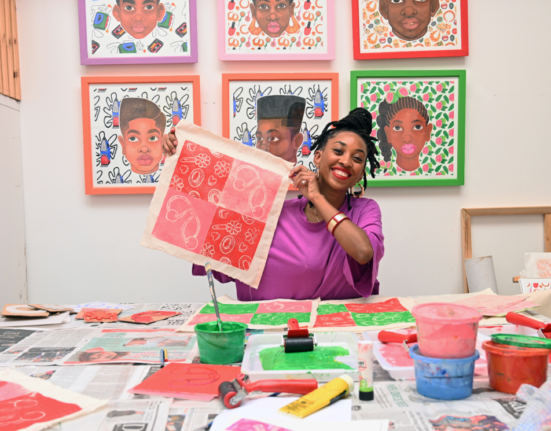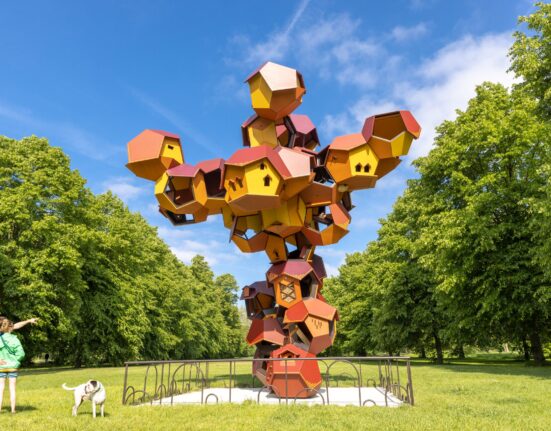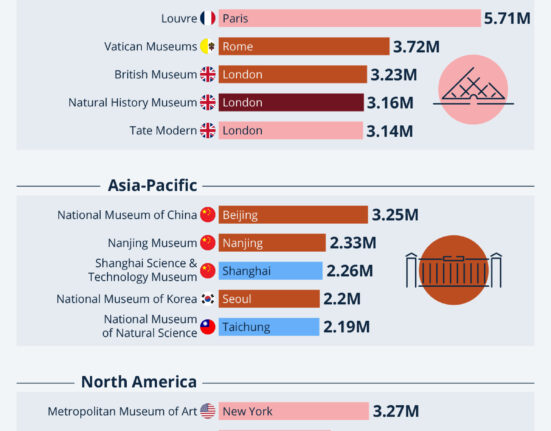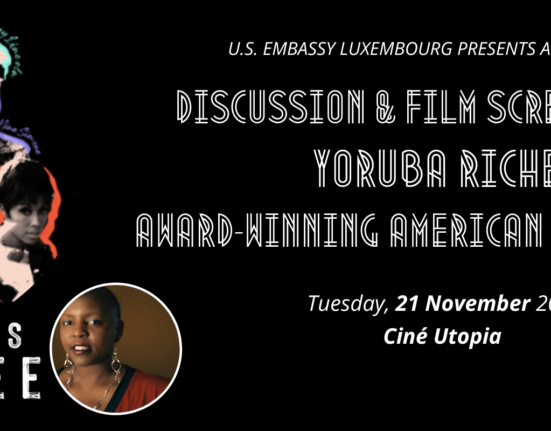It should come as no surprise that wine has been a worldwide source of artistic inspiration for millennia. It’s there in ancient Egyptian tombs. In Islamic works as a metaphor for both the divine and the debased. In dramatic depictions of class struggle in Central and South Asian art. In the religious art of the Americas post-Conquest, and anywhere else wine has been produced or consumed.
It plays an especially prominent role in European painting from the late Renaissance forward, when a desire to represent human emotion and everyday life intersected with wine’s increased consumption and production for non-religious reasons.
Here are some that we love and inspire us to crack open a bottle.
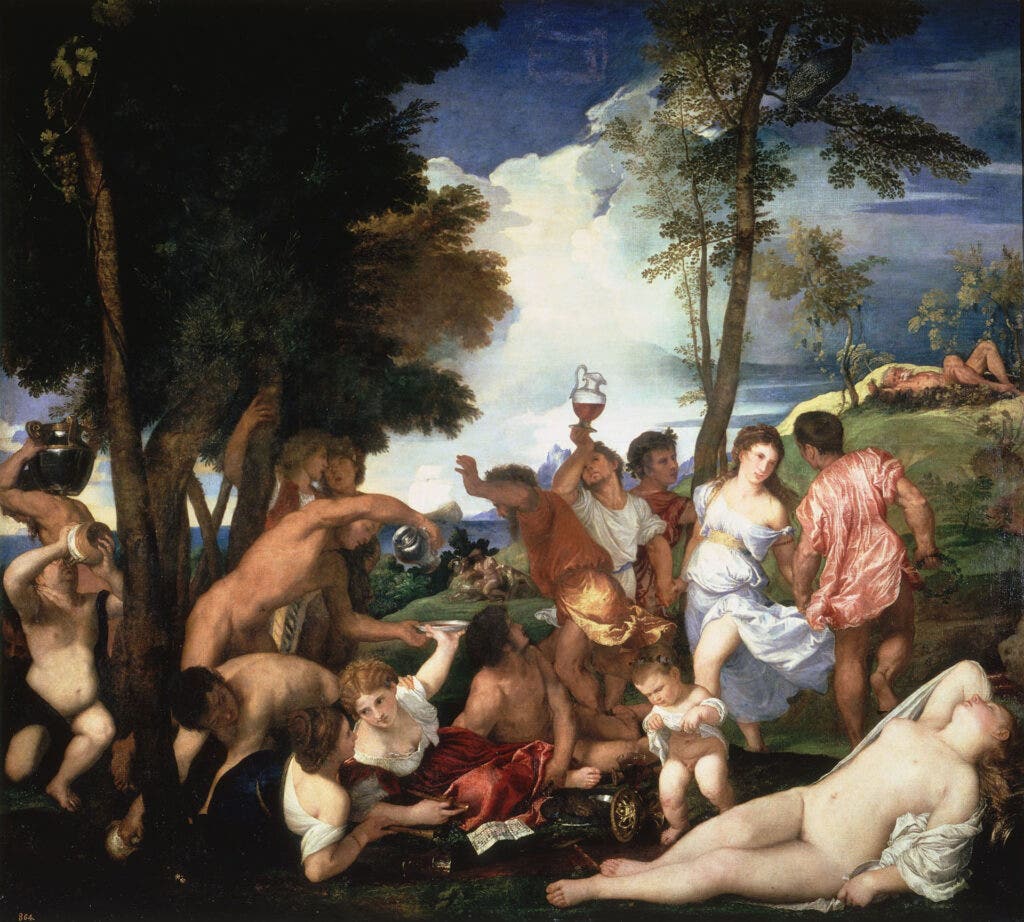
Bacchanal of the Andrians by Tiziano Vecelli (Titian) (1523)
Of all the wine-soaked paintings of bacchanals through the centuries, this might be the most famous, and most imitated. (It was actually copied by such artists as Pieter Paul Rubens and Diego Velázquez, among many others.) The scene is downright debauched, a celebration of wine and merriment, with a hoisted decanter at dead center. A tiny musical scroll reads, translated from French, “He who drinks and doesn’t drink again doesn’t know what drinking is.”
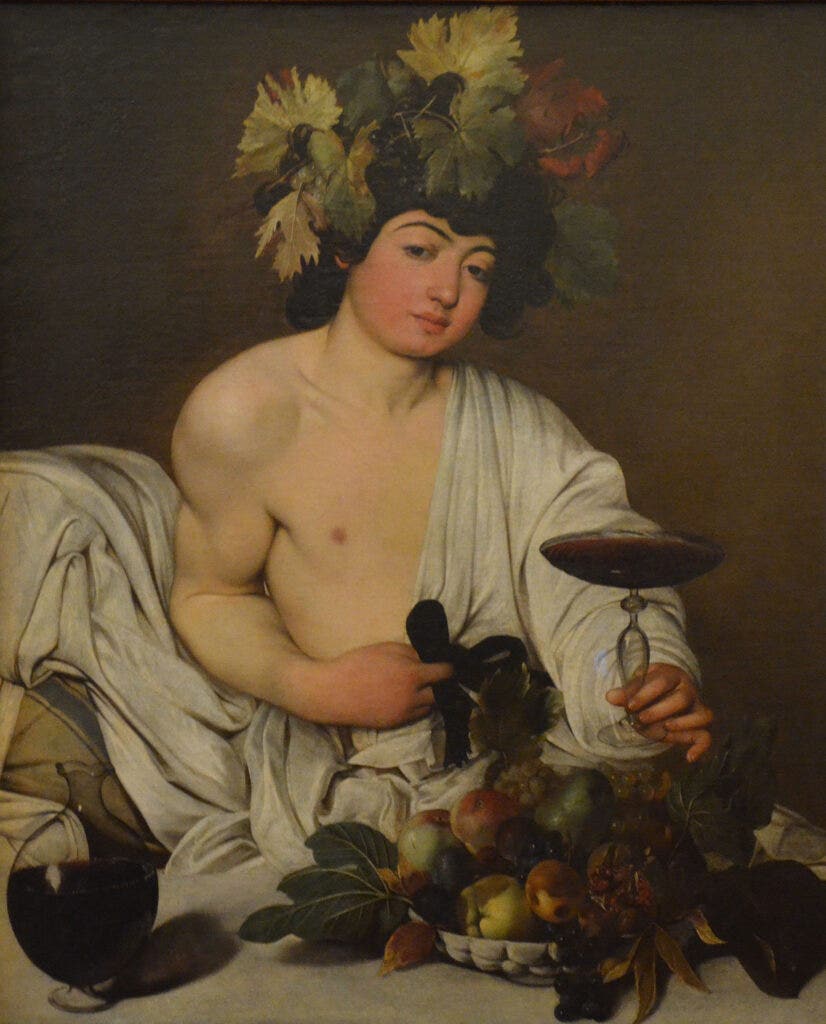
Bacchus by Caravaggio (c. 1596)
Bacchus has never been depicted so seductively as in Caravaggio’s androgynous rosy-cheeked boy with killer biceps and a robe he can barely keep draped shut. He offers the observer wine from a capacious saucer-shaped glass, as if asking the viewer to lap it up like a cat. It’s a naughty reminder of the beguiling attraction that wine holds for most of us.
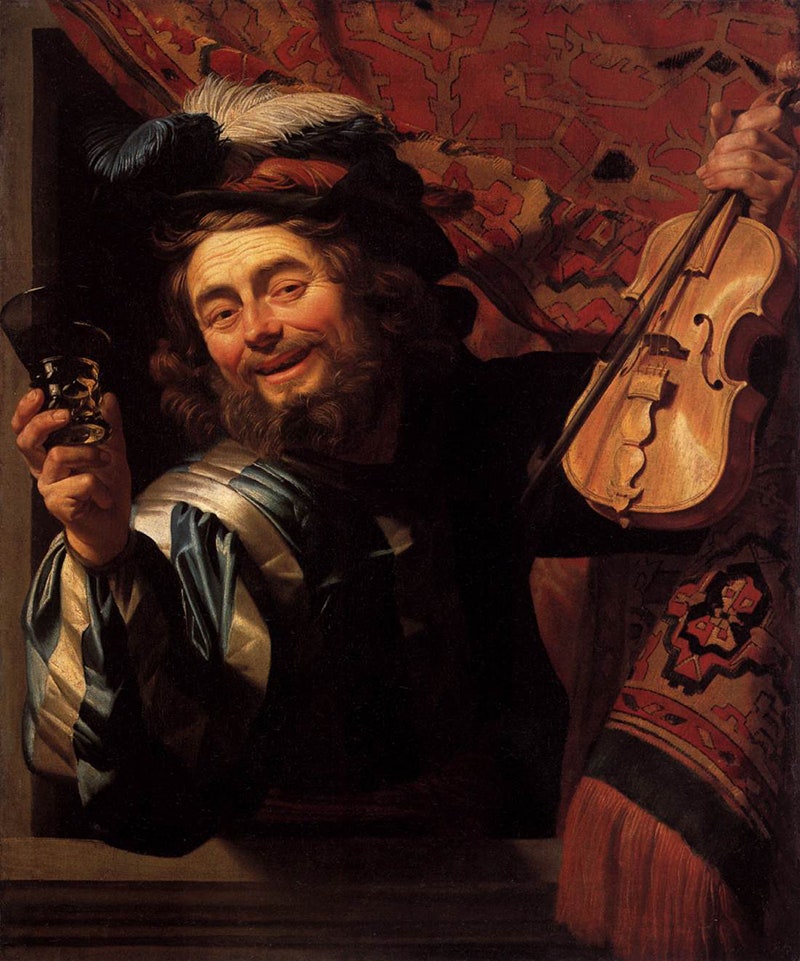
The Merry Fiddler by Gerard Von Honthorst (1623)
You can almost hear the “proost” from this fun-loving fellow, who seems more interested in clinking glasses than serenading you with the fiddle. It nearly feels like he’s busting through the frame on the wall. Von Honthorst was most known for pictures of musicians and religious scenes, always with a remarkably lifelike sense of lighting. He followed this fiddler up the next year with The Happy Violinist with a Glass of Wine, an equally spirited work.
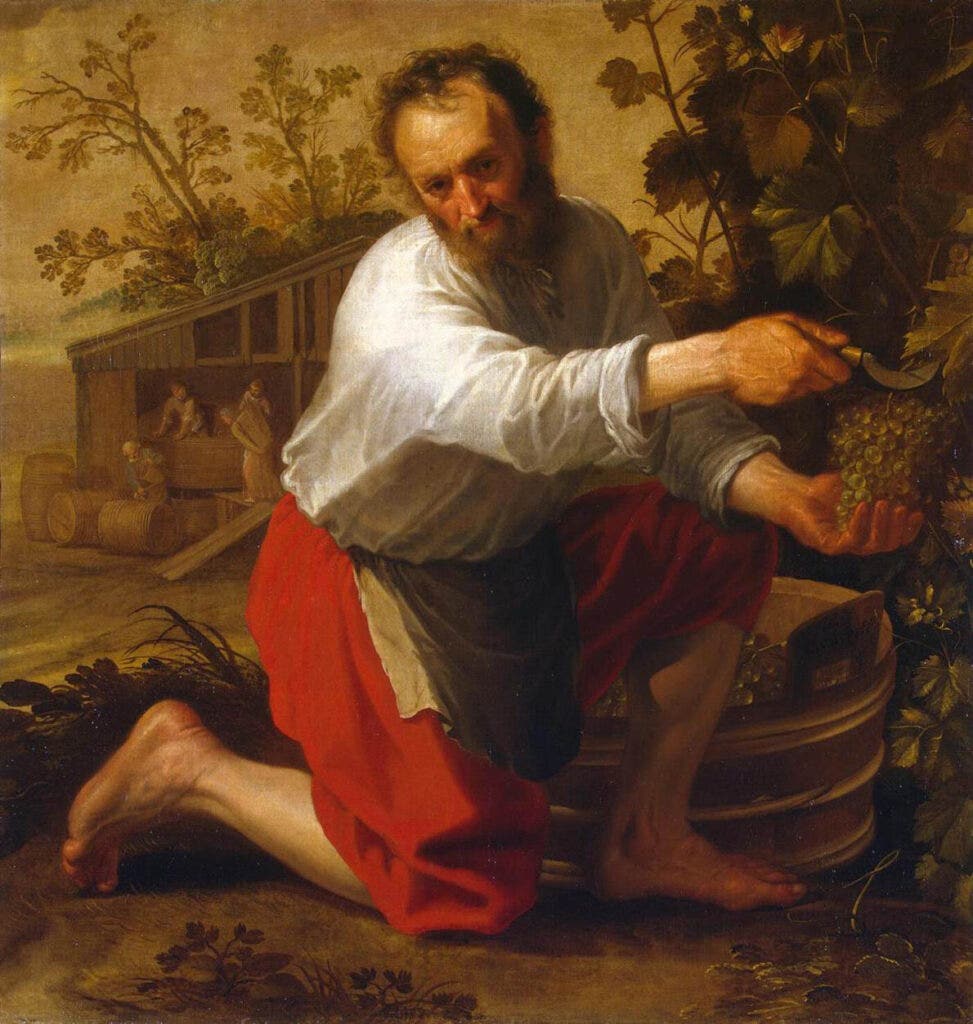
The Wine Grower by Jacob Gerritszoon Cuyp (1628)
The spooky lighting in this weighty work may reflect the lack of sunshine that stopped the Netherlands from being a productive winemaking region, even though there were a handful of producers at the time near Cuyp’s hometown of Dortrecht. The difficulty of this family winemaking operation weighs heavily on the central subject, and it’s especially poignant today given the urgency of farmworkers’ rights and the struggles of small family wineries.

The Wine Connoisseurs by Jacob Duck (c. 1640-42)
The Dutch Golden Age of the 17th century brought with it wine connoisseurship, the wealthy classes enjoying wines imported from far-reaching places that spanned Portugal and Greece to Italian Marsala and Spanish Malaga. Duck painted both military and quotidian life, with a healthy mockery of each. This painting is proof that there’s always been “that guy” at every tasting.
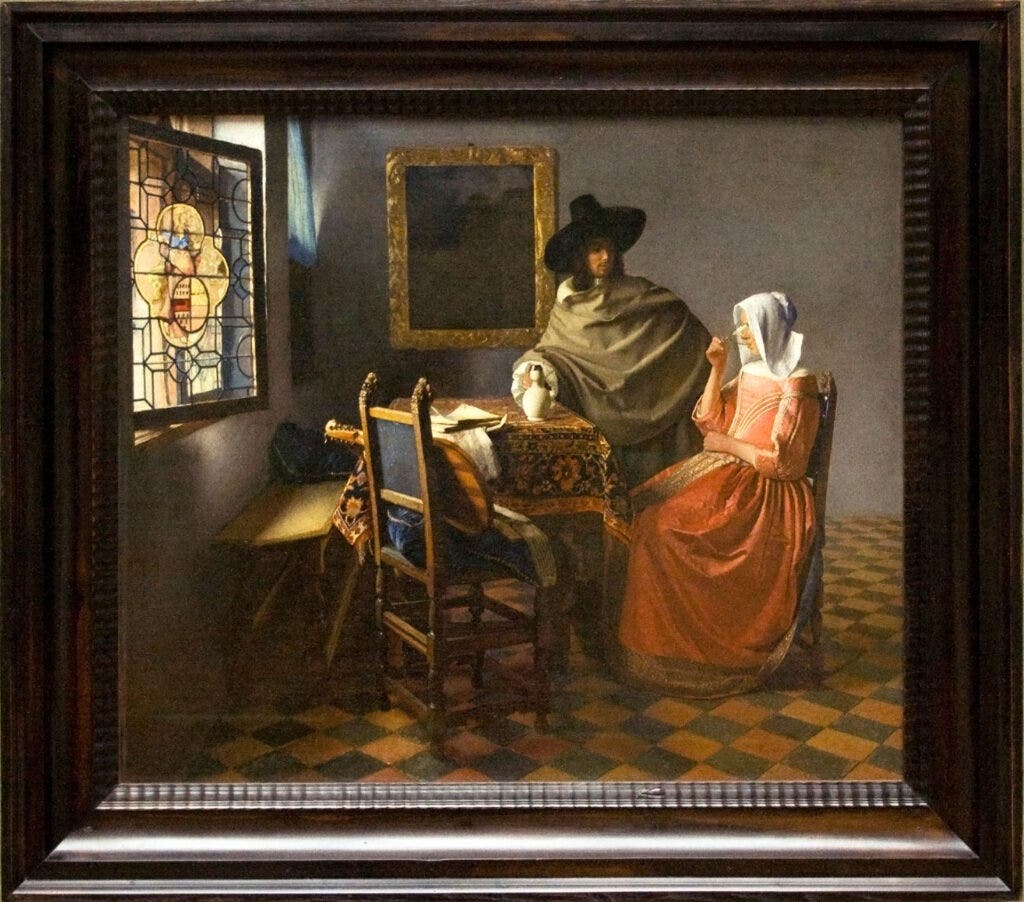
The Glass of Wine by Johannes Vermeer (c. 1660)
This work is a sort of companion piece to Lady and Two Gentlemen (often called The Girl with the Wine Glass), another wine-and-courtship-focused painting from the same perspective in the same space. At the time, wine was spreading beyond the upper classes, as the Dutch were leaders in the wine trade. (The Rhine enters the North Sea at Rotterdam, making it an important port.) As a result, wine was widely available here and around Europe. It’s a key offering in the romantic gesture pictured in this work, and was a common subject in Dutch painting of the time.
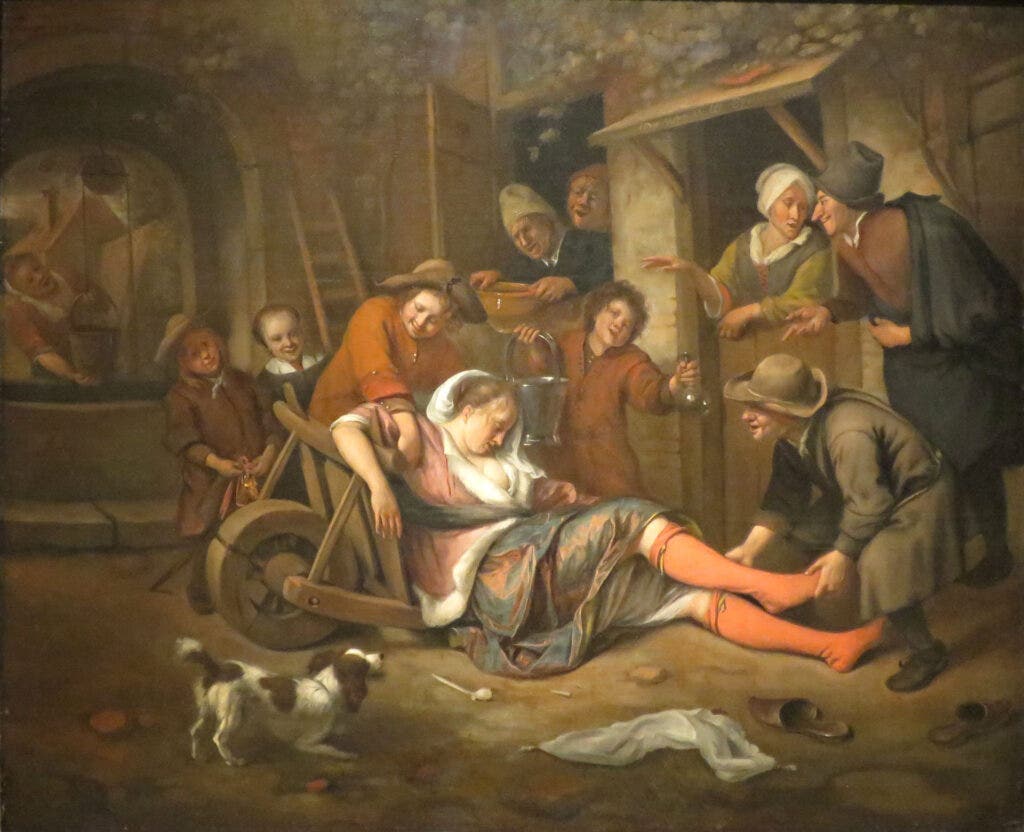
Wine Is a Mocker by Jan Steen (1663-4)
The son of brewers who ran a tavern called the Red Halbert in southern Holland, Jan Steen found much inspiration in taverns and related social scenes, as well as other humorously exaggerated portrayals of everyday life. Though imbued with implicit tsk-tsks, his works vibrate with color and humor and still seem incredibly contemporary today.
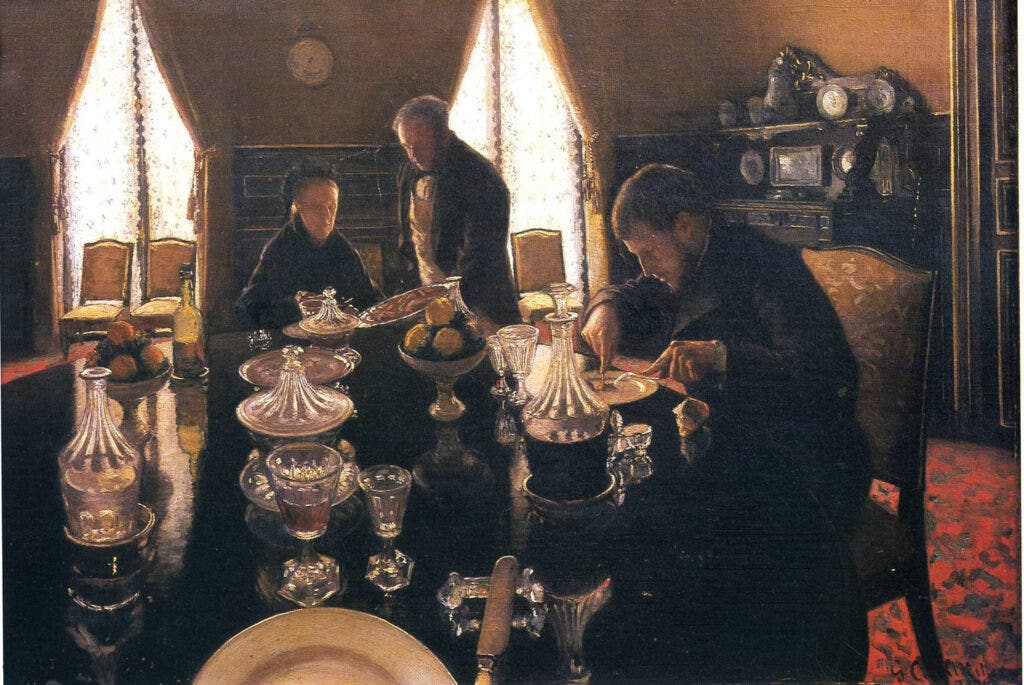
The Luncheon by Gustave Caillebotte (1876)
What a spread—both red and white for lunch!—and yet, there’s nothing joyful here. The claustrophobia of bourgeois life that Caillebotte was so adept at portraying has an extra layer of pathos here, as it depicts his own upper-class family in their mansion in a time of mourning. When this was painted, the French wine industry was just starting to recover from the devastation of the phylloxera wine blight, thanks to grafting onto American rootstocks.
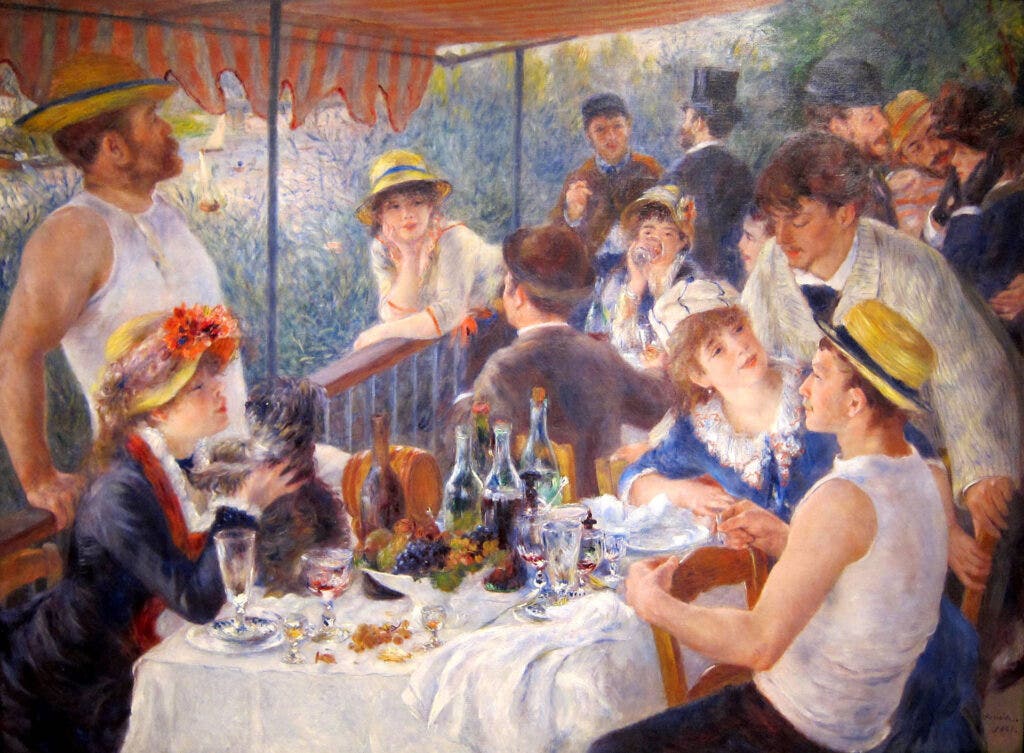
Luncheon of the Boating Party by Pierre-Auguste Renoir (1880-81)
Day drinking never looked so good as in this riverside luncheon in a wealthy Paris suburb. At the time, the painting was much admired for its convergence of still life, landscape and figure painting in one epic work. Today, however, it’s the human energy that stands out; each of the work’s characters represents someone in Renoir’s social circle. Wine, of course, is front and center here, as at any fine repast.
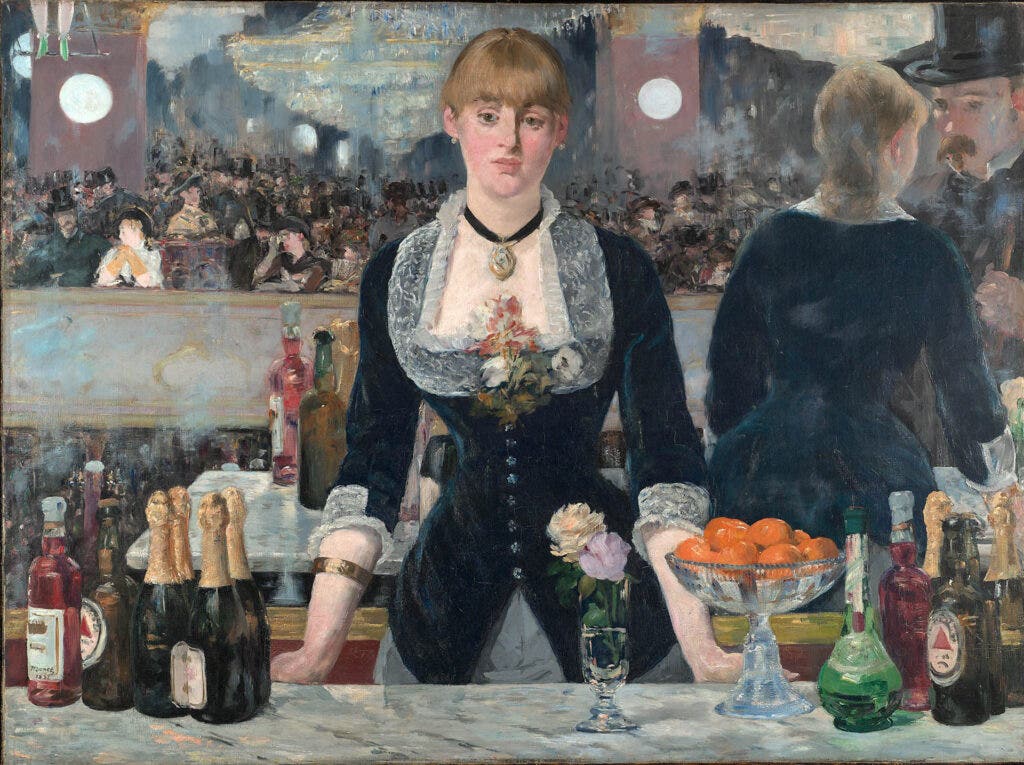
Un Bar aux Folies Bergère by Édouard Manet (1881)
At first glance, this is a straightforward, if vaguely discomfiting, portrait of a favorite barmaid. But what is really the central subject matter? Is it the bustling crowd in the distance? The man (in the reflection to the right) responsible for her unusual expression? Or perhaps the bottles of wine, Champagne, beer and liquor that make up the foreground?
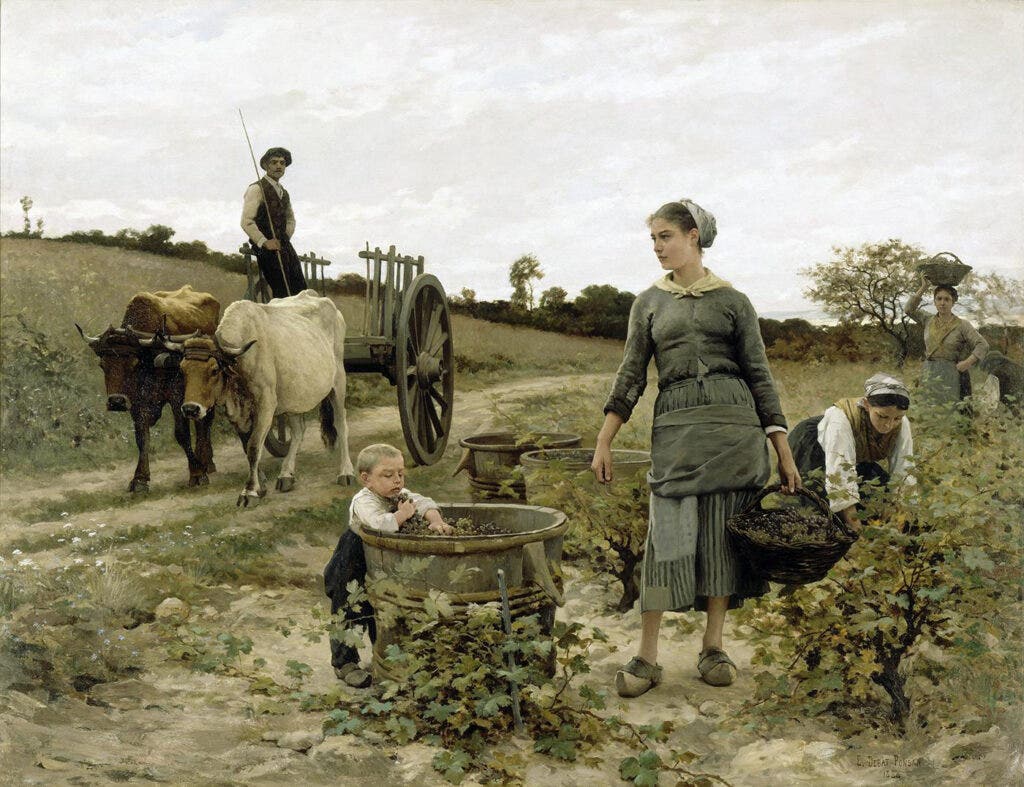
Corner of the Vineyard, Languedoc by Edouard Debat-Ponsan (1886)
The 1880s in Europe—especially France—were desperate years of post-phylloxera reconstruction. The Languedoc, where this is set, is where phylloxera damage was first identified in a vineyard. This particular scene can be viewed as either a family trying to eke out production, or a hopeful view of renewed productivity. Regardless, why are the women and children doing all the work? Women in Debat-Ponsan’s work are usually allegorical figures; maybe this regal woman is Amphictyonis, the Greek goddess of wine?
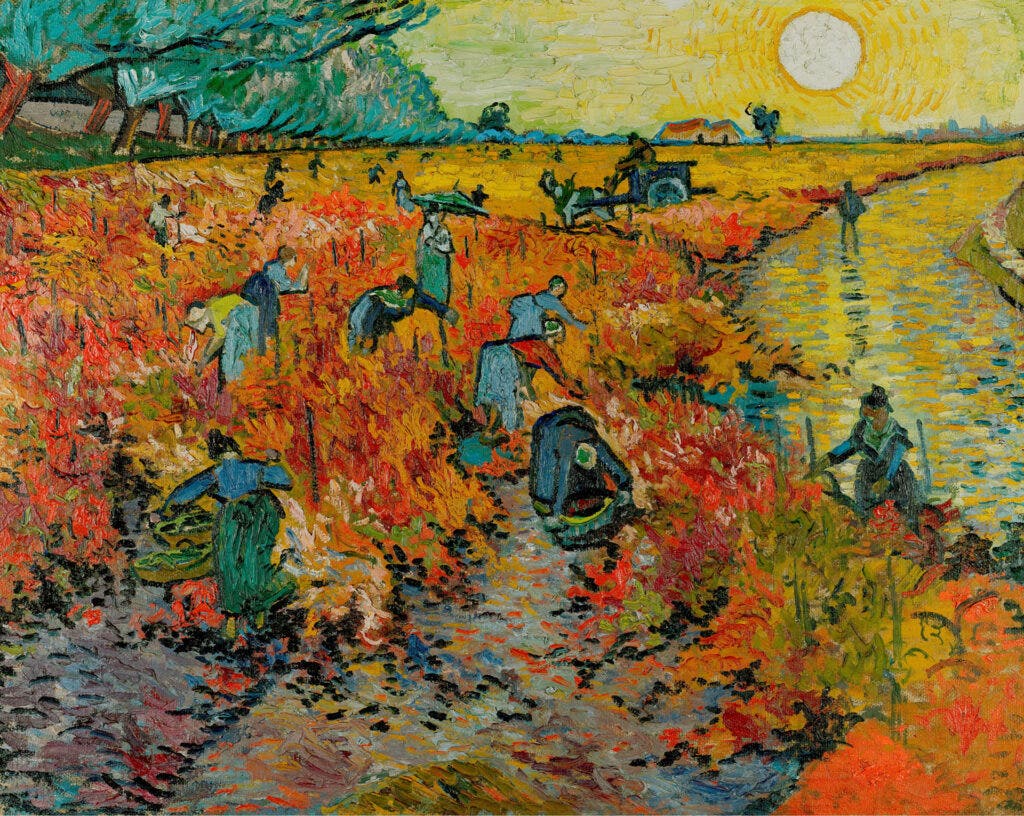
The Red Vineyard by Vincent Van Gogh (1888)
This is often cited as the only painting Van Gogh ever sold during his lifetime, though more accurately, it’s just the only traceable one known by name. A busy vineyard is the perfect setting for Van Gogh’s love of color, blazing reds and oranges under a hot yellow sun, blue workwear and crushed purple grapes, teal trees lining one side and shimmering river reflections on the other. The vineyard is near Arles, likely in Coteaux d’Aix-en-Provence, where Grenache, Mourvèdre and Cinsault were harvested, no doubt.
You May Also Like: In Les Baux-de-Provence, Art Meets Wine
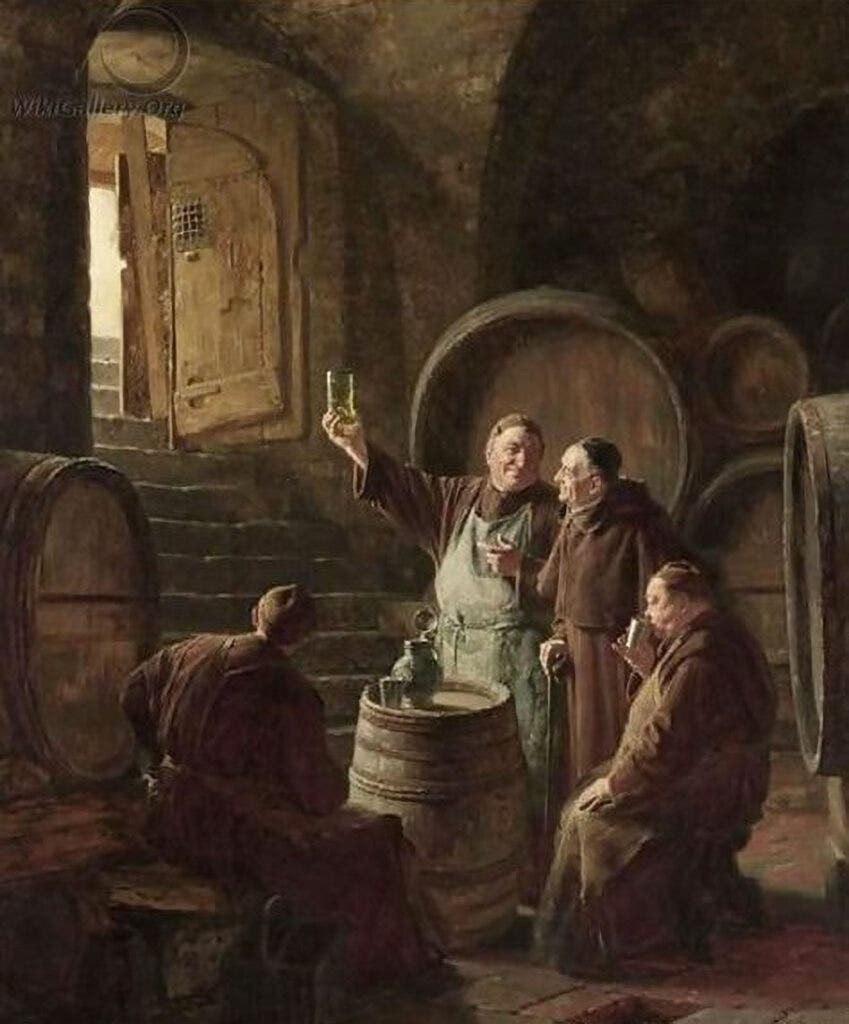
The Wine Tasting by Eduard von Grützner (1891)
Grützner apparently recognized the considerable appeal of a cellar tasting, since he made seemingly countless paintings of monks tasting beer and wine in cellars. (One, titled The Catastrophe, shows a couple of drunk monks that have dropped a basket of full wine bottles.) In September of 2023, a worker for Munich’s Deutsches Museum was arrested for stealing this and two other paintings and replacing them with forgeries.
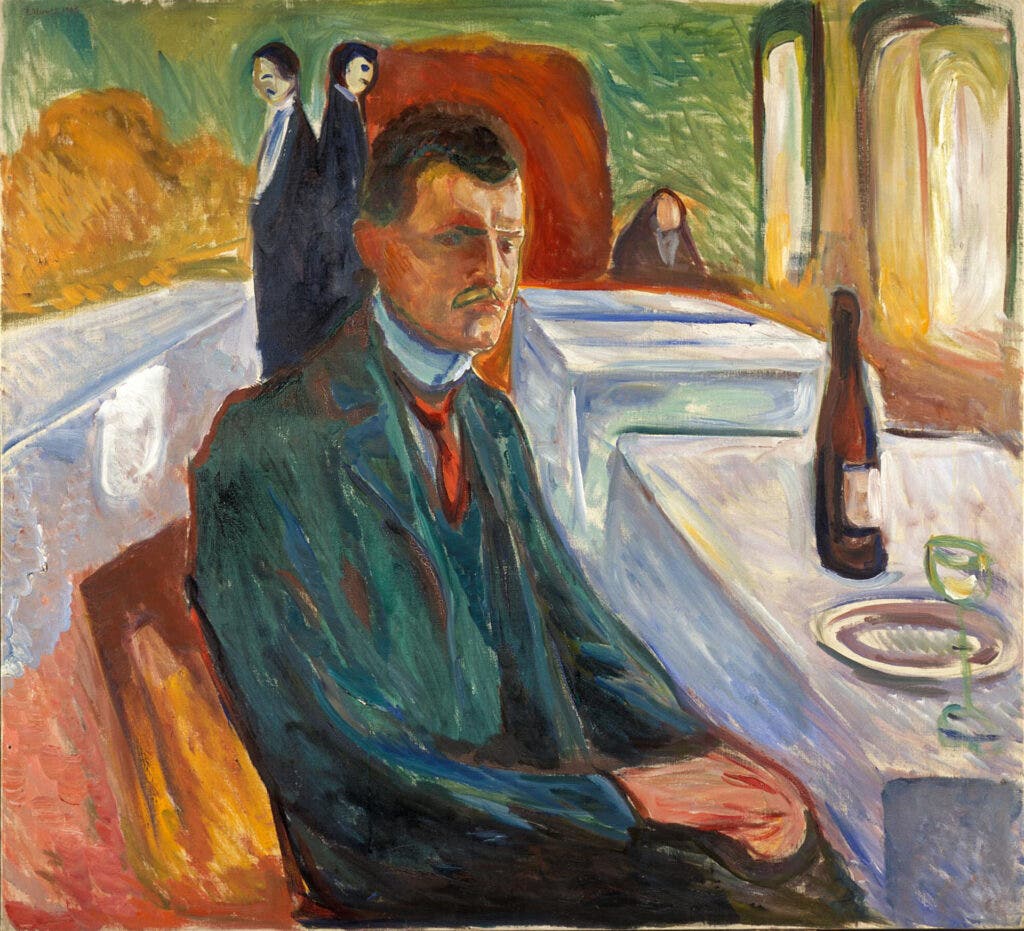
Self-Portrait with a Bottle of Wine by Edvard Munch (1906)
The magic of this painting is how the artist’s internal life, depicted here, was seemingly just as turbulent as the explicit turmoil of the man in Munch’s The Scream. The image of the lone drinker, with spectral figures behind him in an otherwise barren space, fits his oft-repeated theme of feeling alone in the world. At the time of this painting, Munch was a severe alcoholic, and two years later had a mental breakdown and checked into a sanatorium.
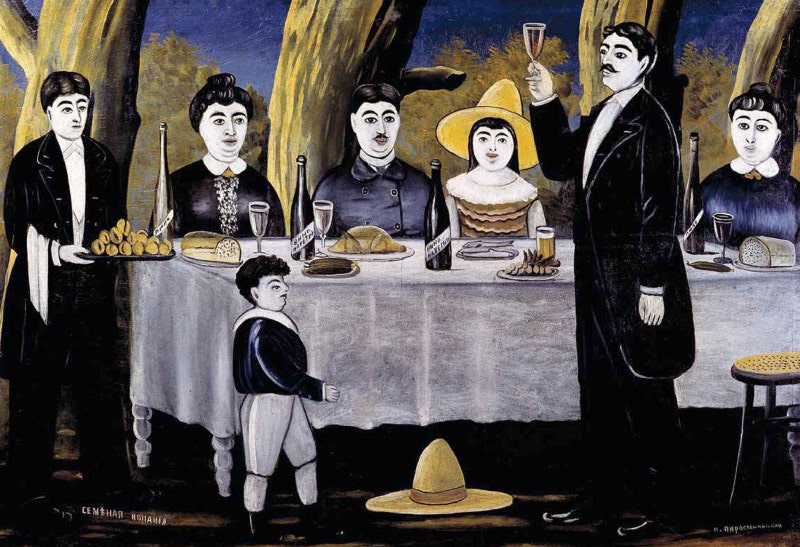
Family Feast by Niko Pirosmani (1907)
Wine was a favorite topic of Georgian painter Pirosmani, whether his subjects were people drinking from horns and hauling wineskins or landscapes littered with clay wine jugs. When this was painted, much like today, there was great conflict between those who wanted to preserve time-honored natural Georgian wine making traditions and critics of these unusual wines, who extolled European methods. Today, some producers have adopted the name “Pirosmani wine” for a style of juicy, fruit-forward red wine made from the Saperavi grape.
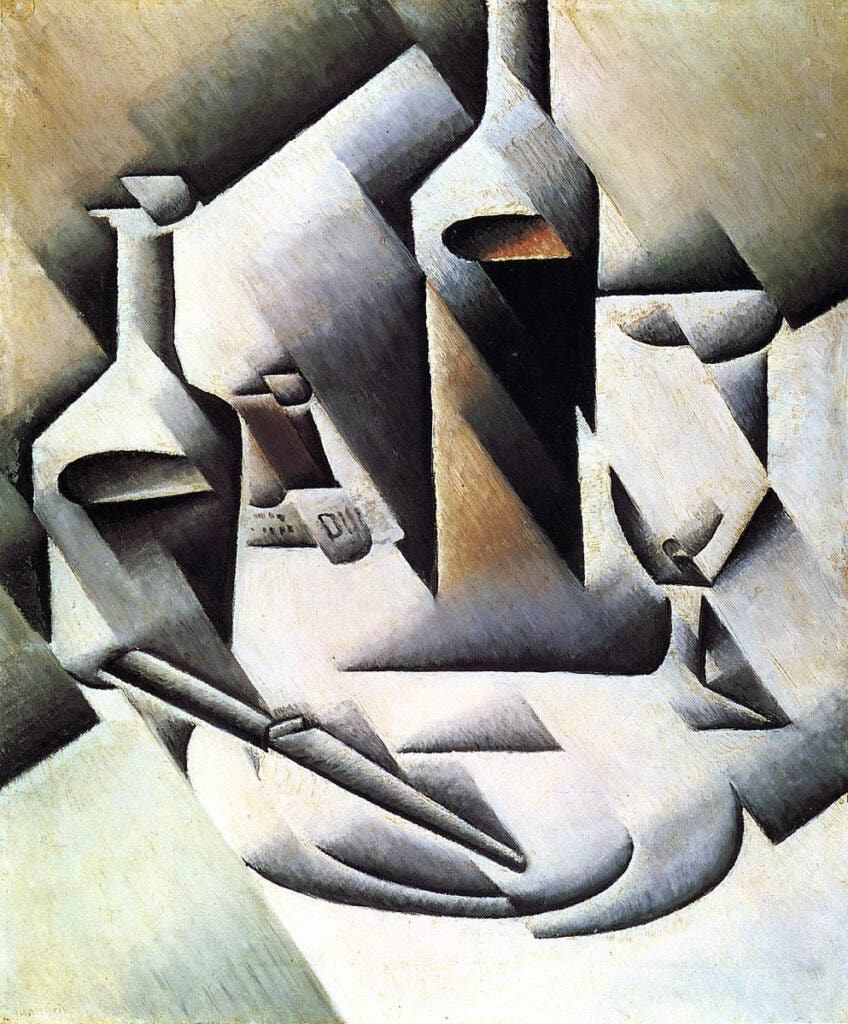
Bottles and Knife by Juan Gris (1911-12)
This Cubist classic is simultaneously serene in its geometric play of shadow and light, and energetic in its diagonal motion and multiple perspectives. And there’s some subtle intrigue: Are the lettered items corks? Why is a knife in the foreground with nothing on the plate? Wine was always a favorite accessory in still-life painting, and this innovative take on the genre shows its ongoing attraction in modern life and art.
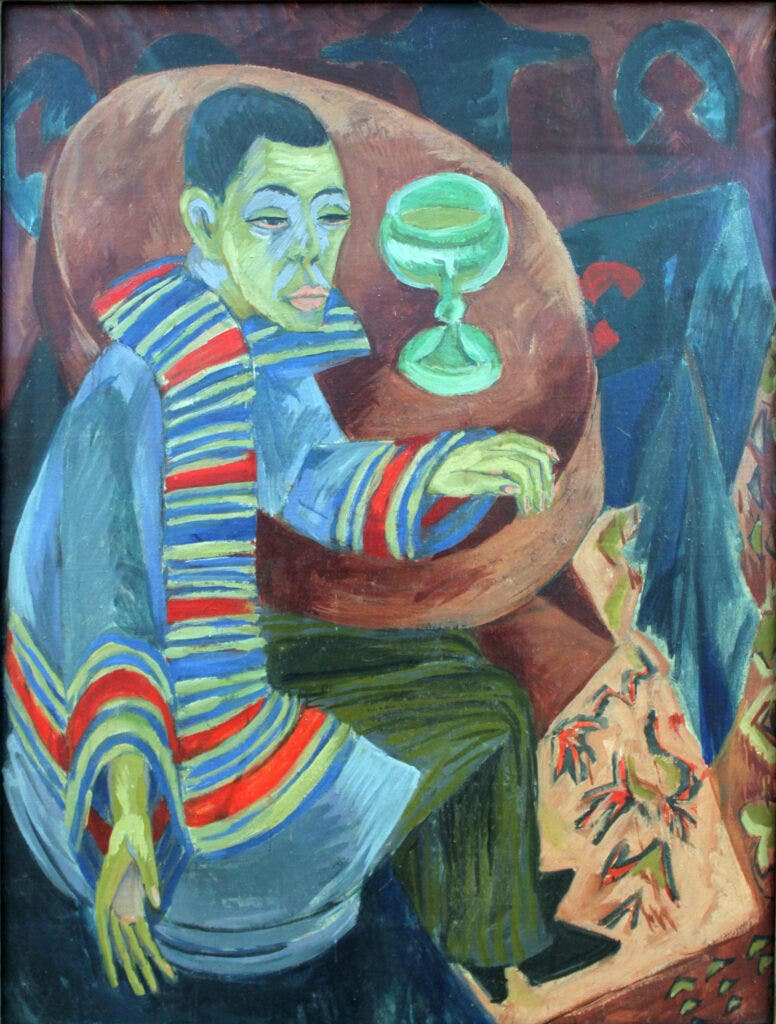
The Drinker (Self-Portrait) by Ernst Ludwig Kirchner (1914)
Between the subject’s wild outfit, resigned expression, hand reaching out of frame and a goblet whose contents are about to spill from the tilting table, there’s a lot to take in here. The tension may be reflective of the onset of WWI, or Kirchner’s mounting alcoholism. Regardless, it’s a powerful example of Expressionism, where emotion ruled over reality. As visual art movements moved into abstract, surreal, pop and conceptual art, wine and inebriation would continue to fascinate artists throughout the 20th century—and still does today, as much as ever.
Published: December 19, 2023


